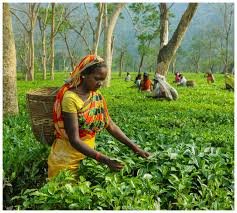India has officially become the world’s second-largest tea exporter in 2024, overtaking Sri Lanka and securing its position behind China. This achievement highlights India’s growing dominance in the global tea market and its increasing influence in international trade. The tea industry in India has long been a major contributor to the country’s economy, providing employment to millions and earning substantial foreign exchange.
Factors Behind India’s Rise in Tea Exports
Several factors have contributed to India’s impressive tea export growth:
- Increase in Tea Production: Favorable weather conditions, improved farming techniques, and government incentives have significantly boosted production.
- Growing Global Demand: The rising popularity of Indian tea in markets like Russia, the UAE, Iran, and European nations has fueled export growth.
- Diversified Product Range: India has expanded its offerings beyond traditional black tea to green tea, organic tea, and specialty blends, making Indian tea more competitive in international markets.
- Government Support: The Indian government has implemented various policies, including subsidies, trade agreements, and promotional campaigns, to enhance tea exports.
Impact on India’s Economy
The surge in tea exports has had a significant positive impact on India’s economy:
- Employment Generation: The tea industry employs over a million workers, especially in Assam, West Bengal, and Tamil Nadu.
- Foreign Exchange Earnings: Higher export revenues contribute to India’s forex reserves, strengthening the economy.
- Boost for Small Tea Growers: The rise in exports has increased demand for tea produced by small farmers, ensuring better income and financial stability.
Challenges Faced by the Tea Industry
Despite the success, India’s tea industry faces several challenges:
- Climate Change Impact: Unpredictable weather patterns and erratic rainfall affect tea yields and quality.
- Competition from Other Countries: Countries like Kenya, Vietnam, and Sri Lanka continue to be strong competitors in the global market.
- Fluctuating International Prices: Global tea prices are often volatile, impacting profitability for exporters.

Why This News is Important
Strengthening India’s Global Trade Position
India’s emergence as the second-largest tea exporter enhances its reputation as a leading agricultural exporter. This strengthens India’s trade relationships and boosts its standing in international markets.
Boost to Employment and Rural Economy
Millions of workers, particularly in Assam, Darjeeling, and Nilgiri regions, benefit from the growing tea industry. The sector’s expansion leads to more job opportunities and economic development in rural areas.
Diversification of Indian Exports
With India broadening its tea varieties and enhancing quality, the country is expanding its footprint in non-traditional markets, reducing dependency on a few major buyers.
Support for Small and Medium Enterprises (SMEs)
Many small tea growers and entrepreneurs benefit from the government’s focus on exports, helping them compete globally and ensuring financial stability.
Historical Context: India’s Journey in the Global Tea Market
India has been a major player in the tea industry for centuries. Introduced by the British in the 19th century, Indian tea plantations flourished in Assam and Darjeeling. Over the decades, India developed into one of the world’s largest tea producers, consistently competing with China, Sri Lanka, and Kenya. In recent years, India’s emphasis on organic and specialty teas has boosted its market presence, leading to this remarkable achievement in 2024.
Key Takeaways from India’s Rise as the Second-Largest Tea Exporter
| Sr. No. | Key Takeaway |
|---|---|
| 1 | India has overtaken Sri Lanka to become the world’s second-largest tea exporter, behind China. |
| 2 | Factors such as increased production, global demand, government support, and diversified product offerings contributed to this success. |
| 3 | The growth in tea exports positively impacts employment, foreign exchange earnings, and small tea growers. |
| 4 | The Indian tea industry faces challenges like climate change, competition, and fluctuating prices. |
| 5 | This achievement strengthens India’s position in global trade and enhances its economic growth. |
FAQs: Frequently Asked Questions
1. Which country is the largest tea exporter in the world?
China remains the largest tea exporter globally, followed by India and Kenya.
2. What are the major tea-producing states in India?
The top tea-producing states in India are Assam, West Bengal, Tamil Nadu, and Kerala.
3. How does tea export benefit the Indian economy?
Tea exports contribute to foreign exchange earnings, create employment opportunities, and support small farmers.
4. What are the challenges faced by India’s tea industry?
Challenges include climate change, competition from other tea-exporting countries, and fluctuating international prices.
5. How has the Indian government supported the tea industry?
The government has introduced subsidies, trade agreements, and promotional campaigns to boost tea exports.
Some Important Current Affairs Links


















 Exciting News!
Exciting News!  Join Our Telegram Channel Now!
Join Our Telegram Channel Now!
 Join our Telegram channel for a thrilling adventure into the world of daily current affairs.
Join our Telegram channel for a thrilling adventure into the world of daily current affairs. 
 Don’t miss out on the latest updates and insights! Click to join now and be part of the knowledge revolution!
Don’t miss out on the latest updates and insights! Click to join now and be part of the knowledge revolution! 
